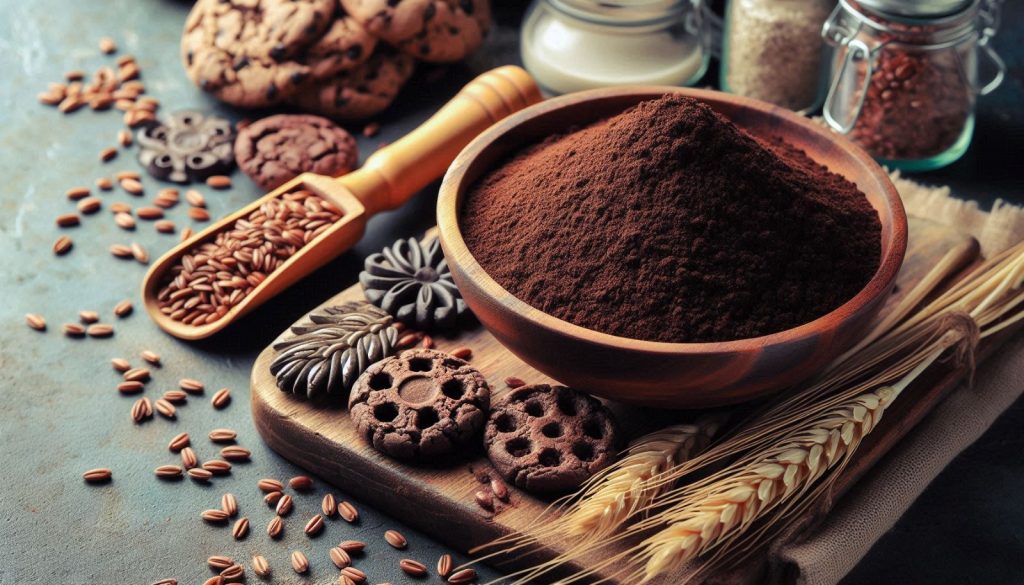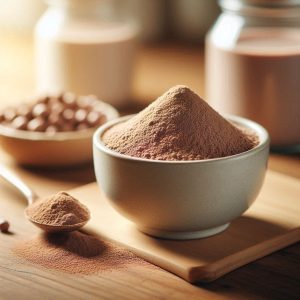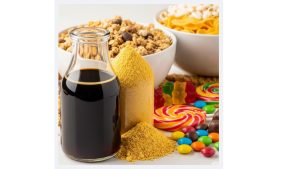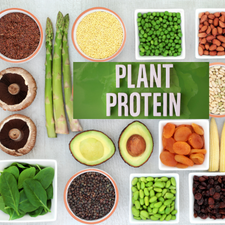
A new type of flour known as roasted barley flour is produced by toasting barley flour. This flour has several health advantages, tastes like almonds, and is high in nutrients. Also known as Tsampa in Tibetan and Besso in Ethiopia, it is an essential component of the diets of people who live in the Himalayan and Tibetan regions.
Changing the physicochemical properties of food is one of the main objectives of the new technologies. This roasting method is founded on straightforward, useful, and flexible ideas; it enables you to use the equipment that is already available while still creating products that are safe for human consumption and devoid of chemicals. You are able to produce a flour that is not only effective in bread-making but also has a mild nutty flavor, a longer shelf life, and a wealth of nutritional contents by combining barley varieties that are high in beta-glucan and proteins with heat treatment. This was controlled even though there was very little gluten in the flour.
Elementary advantages
Roasted barley flour has numerous health advantages, such as a stronger cardiovascular system and a decreased risk of diabetes and blood cholesterol. What was the result? Whole, natural foods made without the use of artificial substances that are tasty and nutritious. Barley is a major cereal grain that is used in a wide variety of breads, drinks, and meals from throughout the globe. Unlike refined or “enriched” grains, whole grains are rich in vitamins, minerals, and dietary fibre. These nutrients are absent from refined or “enriched” grain products. When grains are refined, much of the fibre and minerals are eliminated along with the bran and germ.
Roasted barley flour is a fantastic option for baking since it has a stronger, nuttier flavour than regular flour, has more fibre, and may have health benefits like improved blood sugar control because of its high beta-glucan concentration. Without compromising texture, baked goods can offer all of these advantages and more. It offers a slightly different flavour profile and is a healthier alternative to ordinary flour.
Historical standpoint
For many decades, roasted barley flour, or Tsampa, has been the mainstay diet of the Tibetan people. Tsampa has been the main traditional dish during this time. It is ideal for use at home or on the go due to its simplicity of preparation, which involves using roasted whole-grain barley.
Tsampa, also known as Roasted Barley Flour, is easy to make and can be prepared in a number of ways. After roasting the barley grains with sand or by themselves, the whole grains are cleaned and then ground into powder. When finished, it is prepared for usage.
Nomads usually use manual mills to prepare the roasted barley, but farmers usually utilize water mills. The quality and freshness of the barley or the production process determine a few of Tsampa’s distinctive characteristics. While certain varieties of Roasted Barley Flour, or Tsampa, are ground into a fine powder, others are pounded into a coarser consistency.
Crucial details about roasted barley flour:
Compared to white flour, whole wheat flour contains more vitamins, minerals, and fibre. This is particularly true for beta-glucan, a soluble fibre that may be good for human health.
Because the roasting process enhances the barley’s natural nutty flavour, baking with roasted barley brings out more complex flavours.
The chance that it will give the product a somewhat denser and chewier texture depends on how much is utilized.
From a dietary standpoint, this can be a fantastic choice for anyone attempting to regulate their blood sugar levels or boost their intake of fibre.
The most crucial points to keep in mind:
- It is often recommended to begin by substituting a percentage, such as 20 to 30 percent, of regular flour with roasted barley flour to prevent significantly altering the texture of your baked goods.
- Because roasted barley flour absorbs more moisture than regular flour, you may wish to cut the liquid by half when using it in recipes that call for conventional flour.
Reasons to use roasted barley flour
This gourmet treasure is rich in fibre, vitamins, and minerals. In addition to being tasty and having a rich, nutty flavour, it supports a robust immune system, helps with digestion, and gives long-lasting energy.
This flour can be used to make parathas, pancakes, noodles, spaghetti, soup, smoothies, and even baked goods like bread, cakes, cookies, and muffins. It’s satisfying and healthy for your stomach. You can use it alone or in conjunction with other flours to accentuate its nutty flavour.
What distinguishes Roasted barley flour from regular flour?
The primary distinction between ordinary flour and roasted barley flour is the type of grain used in their production. While roasted barley flour is formed from the grains of the malted barley plant, traditional flour is frequently manufactured from wheat.
Three of the most popular grain flours—barley, wheat, and rye—all contain gluten. Roasted Barley flour has the least amount of gluten out of the three types of flour.
Roasted barley flour is usually prepared from whole barley grains, except for pearl barley flour. On the other hand, all-purpose flour is more refined than roasted barley flour since the bran and germ are often removed. This explains the thicker viscosity, increased fibre and mineral content, and nuttier flavour of roasted barley flour, which sets it apart from ordinary flour.
Learning how to use Roasted barley flour for baking and cooking
You should be aware that roasted barley flour won’t rise as much in baking as wheat flour since it has less gluten. When contrasted with wheat flour, this is particularly true. It is advised to use it with bread flour when baking bread in order to compensate for this.
In most recipes, Roasted barley flour should not be substituted for ordinary flour unless otherwise noted. There are some exceptions to this rule. Roasted barley flour can be used in place of 25–50% of the all-purpose flour in the recipe. It might not be appropriate for use in lighter baked items like cakes and pastries due to its strong flavour and rich structure. Roasted barley flour is a terrific addition to bakery goods like muffins and flatbreads.
Last words
Roasted barley flour, for instance, can be used to bind meatball or dumpling dough and thicken soups and stews. It works well for meatballs and other similar recipes as well. It can also be used to make crackers and spaghetti.
Malted grains are dry milled, and the powdered material is then sieved to create our PMV malt flours. The final result of our specified technique is a powdered material. This can be added to the bread dough to enhance its nutritional content, give it a little natural sweetness, and improve its texture. In addition to adding a rich, toasted flavour, our PMV roasted malt flours improve the final product’s flour’s appearance and aroma.



